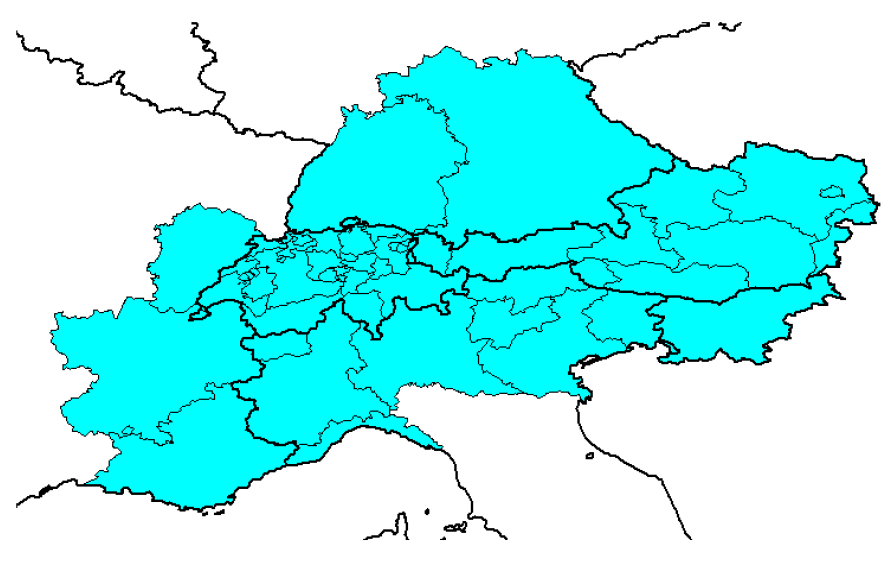1. General definitions
NACE Rev. 2 Classification is a statistical classification of economic activities, which is currently adopted at EU level. Here, such a classification is used in order to single out the number of enterprises that perform professional and scientific activities. In particular, the Section M of the NACE Rev. 2 Classification disentangles “Professional, scientific and technical activities”. This section includes specialised professional, scientific and technical activities. In general terms, these activities tend to require a high degree of training, and make specialised knowledge and skills available to users (Eurostat RAMON, 2017).
Nevertheless, this section is not particularly homogeneous. Indeed, Section M includes seven different divisions (i.e. 2-digit classification of the economic activity), which are defined as follows (Eurostat RAMON, 2017):
- 69 – Legal and accounting activities: legal representation of one party’s interest against another party (e.g. advice and representation in civil cases, advice and representation in criminal actions, advice and representation in connection with labour disputes); preparation of legal documents; other activities of notaries, accounting, bookkeeping services;
- 70 – Activities of head offices; management consultancy activities: provision of advice and assistance to businesses and other organisations on management issues (strategic and organisational planning; financial planning and budgeting; marketing objectives and policies; human resource policies, practices, and planning; production scheduling; and control planning); activities of head offices;
- 71 – Architectural and engineering activities; technical testing and analysis: provision of architectural services, engineering services, drafting services, building inspection services and surveying and mapping services, as well as performance of physical, chemical, and other analytical testing services;
- 72 – Scientific research and development: including three types of research and development: 1) basic research; 2) applied research; 3) experimental development. Research and experimental development activities in this division are subdivided into two categories: natural sciences and engineering; social sciences and the humanities;
- 73 – Advertising and market research: creation of advertising campaigns and placement of such advertising in periodicals, newspapers, television…;
- 74 – Other professional, scientific and technical activities: provision of professional scientific and technical services (except legal and accounting activities; architecture and engineering activities; technical testing and analysis; management and management consultancy activities; research and development and advertising activities);
- 75 – Veterinary activities: provision of animal health care and control activities for farm/pet animals.
According to the aforementioned definitions, it could be said that Section M includes a large number of heterogeneous activities. In particular, both “legal and accounting activities” (division 69) and “other professional, scientific and technical activities” (division 74) include, by definition, a variety of services. They all differ from veterinary activities, as included into division 75. Nevertheless, all these typologies of enterprises could represent the ultimate target of this research project, as they could be interested in sharing new knowledge about research and laboratory services.
2. Number of local establishment and employees, at EU level
According to Eurostat data, the local establishments (i.e. the local units) that are included into Section M were about 4 million in 2011, by considering the whole EU level (Note 1. Here, 27 Member States are considered: Croatia is not included. Moreover data about Switzerland are not returned, as the country is not a EU Member State). These local units accounted for about 11 million persons employed. Nevertheless, local units within divisions 72 and 74 just represent a minority of them: the former division just includes 53 thousands local units, the latter one includes 617 thousand local units (Table 1).
Within the EU-27 Member States, those countries that are (partially or totally) affected by the EUSALP Strategy are just five: France, Germany, Italy, Austria and Slovenia (neither Switzerland nor Lichtenstein are EU Member States). As far as they are concerned, they host 1.7 million local units classified within Section M. In absolute terms, Italy host the large number of local units (732 thousands), followed by France and Germany (Table 2).
However, given the fact that some of these countries are not completely covered by the EUSALP Strategy (Figure 1), data about the covered regions can be insightfully returned as well. To this respect, the number of local units dramatically decreases. When just considering the regions directly involved in the Strategy, they host only 600 thousand local units (namely 36% of the total number of local units in the involved countries).
Data about single divisions follow similar patterns. In each of the aforementioned territorial areas (i.e. EU-27, countries affected by the EUSALP Strategy, regions directly covered by the Strategy), the relevance of each division is fairly similar: both local units classified as division 69 and local units classified as division 71 represent about 29% of Section M local units, each. On the opposite, “scientific research and development activities” (division 72) represent less than 1.5% of total local units in Section M.

Figure 1 – The area covered by the EUSALP Strategy

Table 1 – Section M and its divisions: number of local units by EU Member State, year 2011

Table 2 – Section M and its divisions: number of local units within the EUSALP area, year 2011
The aforementioned figures make possible to return a comprehensive picture of the importance of Section M activities at both EU and EUSALP level. However, data about local units might not necessarily coincide with data on active enterprises. Indeed, a single enterprise could include more than one local units; nonetheless, local units must be directly considered when analysing employment data. To this respect, a focus on Italian statistics can help to assess a robustness check, in order to verify the existence of possible biases in this analysis.
3. A focus on Italy
As far as Italy is considered, the National Institute for Statistics (ISTAT) returns official statistical information about the number of Italian active enterprises. Data collected in the latest General Census Round (ISTAT, 2011) allow us to single out the number of active enterprises, by region and by NACE Rev. 2 division (Table 3).
In Italy, section M comprises about 700,000 enterprises, but about 40% of them are legal and accounting activities (division 69). Conversely, enterprises within division 72 and division 74 are only 9,000 and 123,000, respectively.
On a geographical basis, the seven regions covered by the EUSALP Strategy (namely, Piemonte, Valle d’Aosta, Liguria, Provincia Autonoma di Bolzano, Provincia Autonoma di Trento, Veneto and Friuli-Venezia Giulia) host a large share of enterprises out of the total in Italy. In particular, they host 42% of the total number of Italian enterprises in Section M. As far as division 72 and division 74 are concerned, the aforementioned Italian regions covered by the Eusalp Strategy host 39% and 50% of the Italian enterprises, respectively.
Eventually, it is possible to compare the total figures about Italy in both ISTAT classification (number of active enterprises, as shown in Table 3) and Eurostat classification (number of local units, as shown in Table 2). As expected, the number of local units is always larger than the number of active enterprises in each of territorial areas pointed out before. Nevertheless, figures do not dramatically differ. Local units in Section M are 5% more than the number of active enterprise. Figures are broadly similar across divisions: only in the cases of divisions 70, 72 and 73 when considering local units a greater overestimation is obtained. In these cases, differences between local units and active enterprises is about 10% of the total number of active enterprises.
4. References.
Eurostat RAMON (2017), Statistical Classification of Economic Activities in the European Community, Rev. 2 (2008). Available at http://ec.europa.eu/eurostat/ramon/nomenclatures/index.cfm?TargetUrl=LST_NOM_DTL&StrNom=NACE_REV2&StrLanguageCode=IT&IntPcKey=&StrLayoutCode=HIERARCHIC
Istat (2011). 9° Censimento Generale dell’Industria e dei Servizi. http://dati.istat.it
